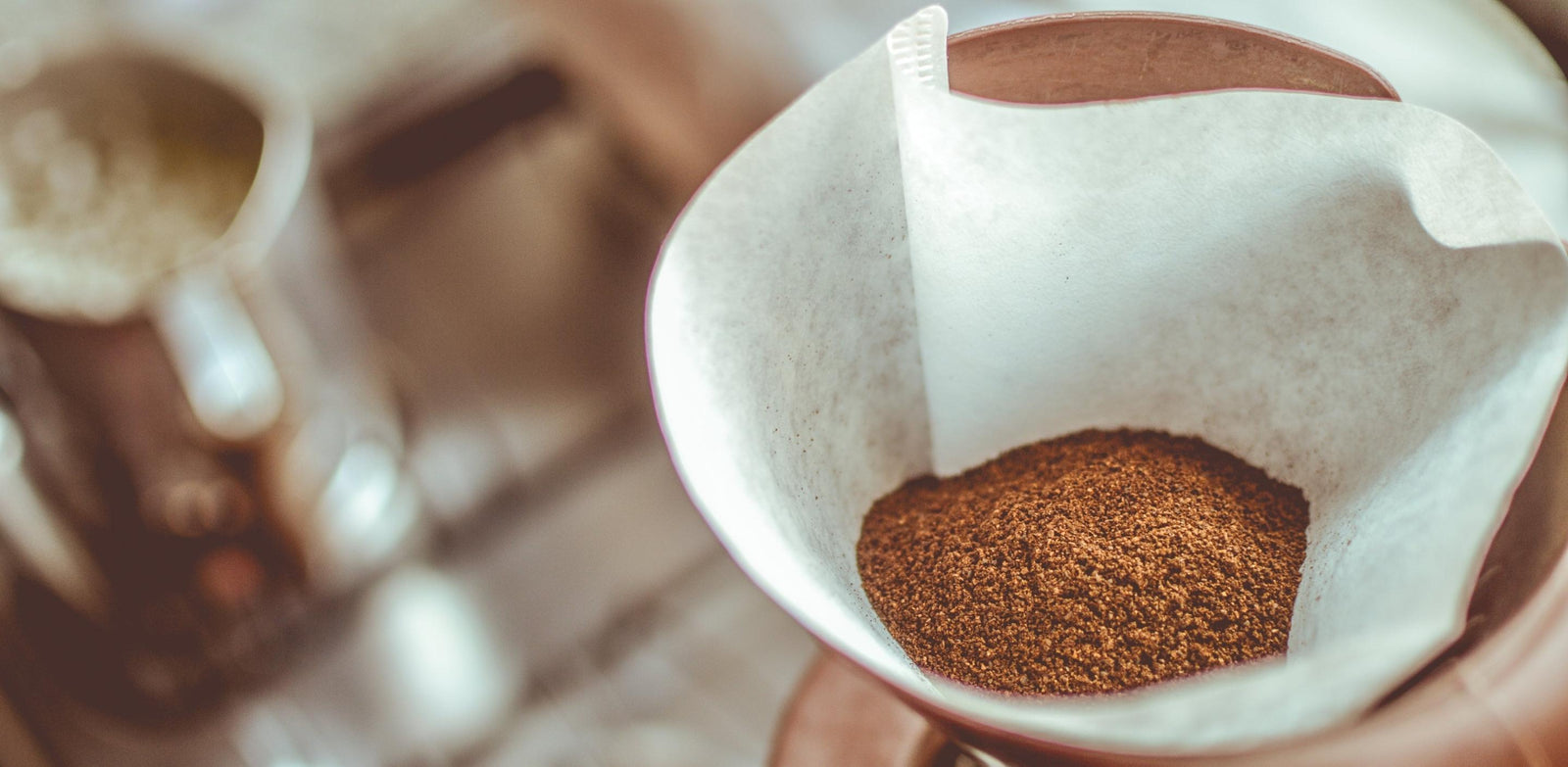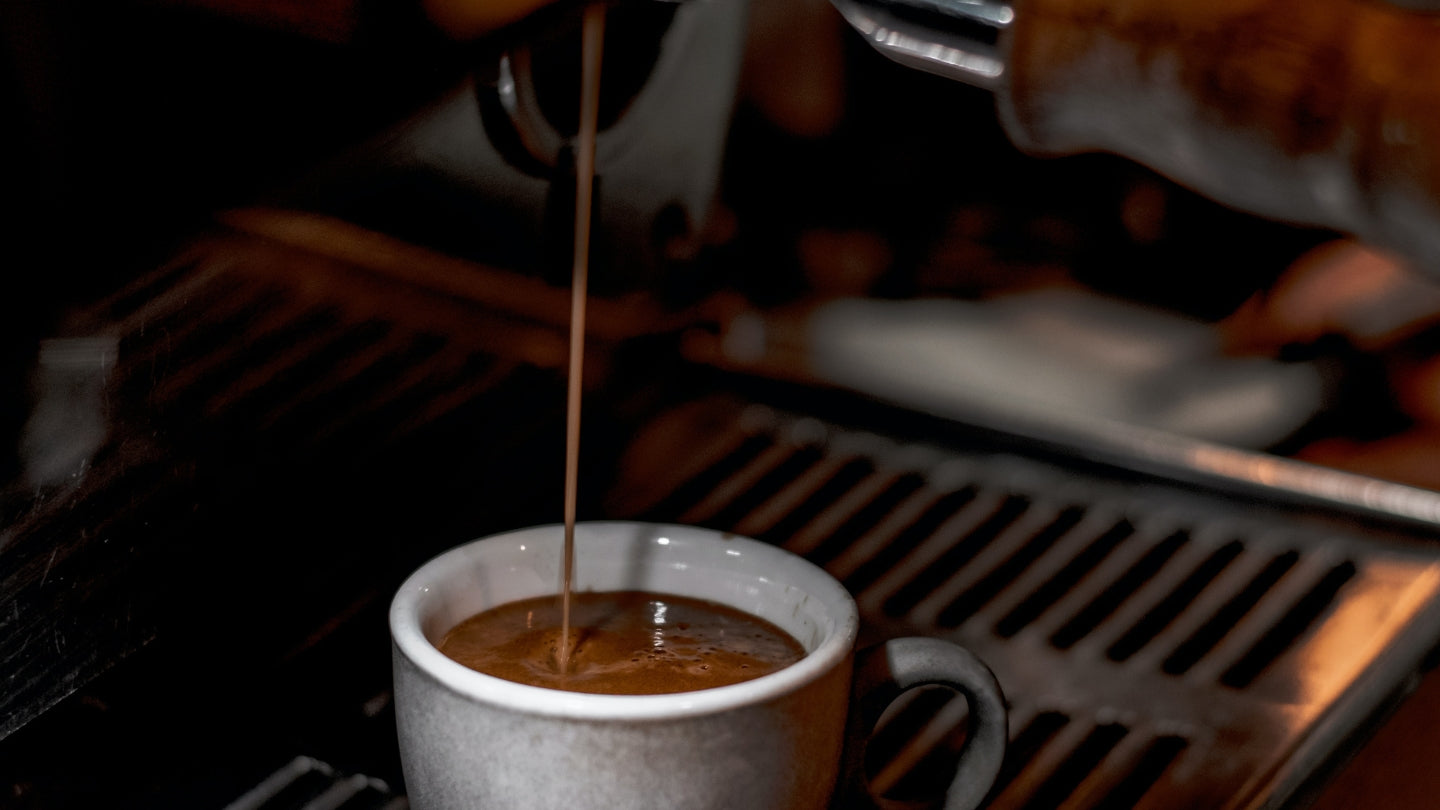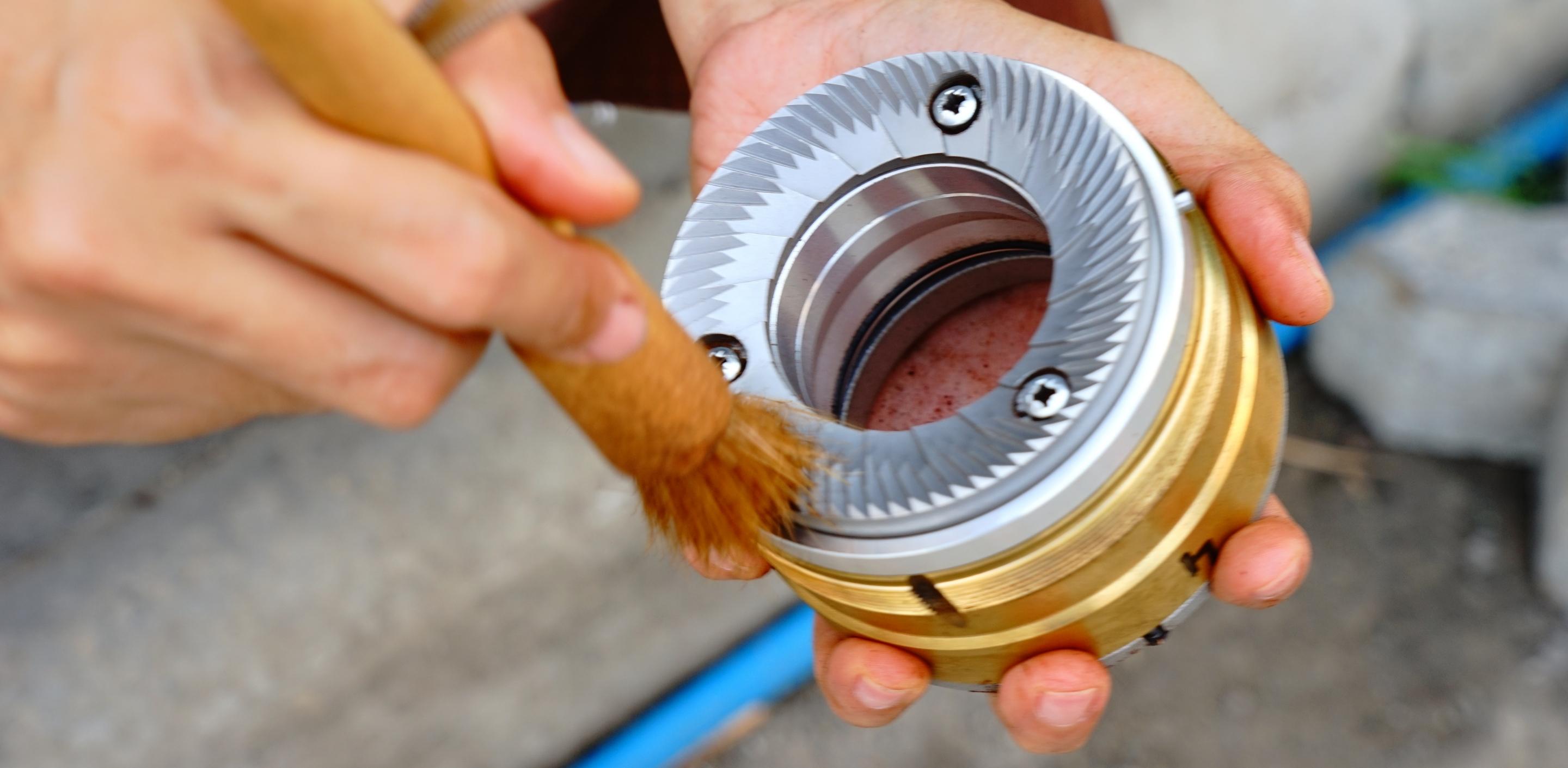Understanding Ground Coffee

Apart from the quality of the coffee beans you choose, the way in which your coffee beans are ground is one of the most essential components to good coffee brewing. Your morning brew can be made delightful or deplorable simply because of the way your coffee coffee beans have been ground up.
Specialty coffee roasters typically advertise their coffees as sporting a variety of flavour notes - anything from chocolate and hazelnuts to passionfruit and mango - and the way in which their beans are ground can affect the potential of tasting these flavours in your coffee.
Grinding coffee seems pretty straightforward on the surface - take some coffee beans, pulverise them up in a blender, and voila, you can brew some coffee with them. True. However, if you care about the flavour you get from your coffee - and if you’re buying specialty coffee with interesting flavour notes, let’s assume you do - grinding your beans well is the place to start maximising their potential.
This article will provide you with an overview of ground coffee and coffee grinding. Our follow up article will take you through the specifics of adjusting your grind for your specific brewing apparatus.
What is ground coffee?
Ground coffee is quite simply coffee beans that have been crushed or cut into smaller pieces, known as grains or grounds. There is a massive variety of coffee grinders on the market available for this purpose, and if you’re reading this, you likely own one. They range from simple mechanical hand-grinders through to high end commercial burr grinders such as you see in cafes. Coffee beans can also be ground in a blender or spice grinder, or in a pinch, even with a rolling pin or a mortar and pestle, though some of these methods aren’t really ideal, as we will see.
How is coffee ground?
If you own a coffee grinder expressly designed for grinding coffee, it’s likely that this grinder uses a ‘burr’ mechanism to grind the coffee. Grinder burrs are typically made of two circular discs fitted against each other, one which is fixed, and the other which spins. They typically have incisions which gradually cut the coffee beans into smaller and smaller particles as the burrs spin. The final particle size of the ground coffee produced is determined by how far apart the burrs are set apart. When we talk about adjusting a grinder or adjusting a grind size, what actually happens is that these grinder burrs are spaced closer or farther apart in order to make the ground coffee particles smaller or larger.
Grinders that are not expressly designed for coffee - any kind of blending grinder that uses blades to cut such as spice 'grinders' and food processors - typically aren't capable of producing either a consistent or a pre-determined grind size. These types of 'grinders' cut the coffee beans, shearing off particles of essentially random size with each cut. While it's certainly possible to use such grinders to grind coffee, and you can get a decent result out of doing so, they do lack the precision required to let you replicate your extractions - which is something you'll likely want to do once you start perfecting them.
Why grind coffee?
While it is technically possible to brew coffee with whole coffee beans, it is far more effective to do so once the coffee has been ground. The smaller the particles of coffee, the easier it is for the brewing water to access the flavour compounds and extract them. Brewing coffee with whole beans takes a long time, and typically isn’t much good, so we hasten the process by grinding the beans, and then additionally by heating the brewing water, putting pressure on the brewing water, or brewing for a longer time.
On a more specific level, grinding coffee well is important because doing so allows us to brew with additional precision, and extract out of our beans the most elusive and satisfying sensations.
The target is no less than a beverage that elevates the senses, catapulting us into the realms of nostalgia and imagination.
Targeting the sweet spot
If your roaster knows their craft, they’ll be providing you with coffee that tastes like what it says on the pack - for the most part. Plenty of coffee tastes like coffee, but if you want to taste flavour notes like blueberries, guava, mango, jasmine, candied orange, or strawberry jam (all of which are possible to experience in top quality specialty coffee) you will probably need to put a little work into your grind setting.
Every coffee, blend or single origin, has a ‘sweet spot’. This is the point at which the balance of compounds extracted from your coffee is just right, and the brew demonstrates the desired flavour profile. This is where perfectly calibrated grinding coffee comes in. Hitting the sweet spot in a brew requires getting the grind setting (as well as the other variables) just right so that the brewing water spends the right amount of time in contact with your ground coffee, and the extracted flavours are in balance.
It’s not always necessary to hit the sweet spot in order to taste the more subtle and unusual flavours in a coffee, but it will most definitely help. The better the quality of coffee and the more capable the roaster, the less precisely you’ll have to brew your coffee to experience the specific flavours. Nevertheless, any effort you put into calibrating your grind setting is going to pay off in sensory experience.
The spectrum of ground coffee
Ground coffee ranges in size from very small grains, almost powder (the kind of ground coffee used to make Turkish or Greek style coffee) to very large granules (the kind of roughly ground coffee generally used in a French Press / Plunger or for cold brewing). Think of these sizes of ground coffee as existing on a spectrum, from small particles to large particles.
Now imagine that the spectrum of particle sizes is not coffee, but rather sand through to perhaps fist-sized rocks, and everything in between. If you took a bucket of sand and a bucket of rocks, and you poured a bucket of water into each, what would happens to the water in each of these buckets?
In the bucket of rocks, there is a great deal of space between the rocks, so it’s very easy for the water to run though right to the bottom, and it will do so quickly. A bucket of sand though, hardly has any space between the grains, so the sand resists the flow of water - so much so that the water might not even make it to the bottom of the bucket.
The spectrum of ground coffee is very much like this. Even though the difference between finely ground and coarsely ground coffee doesn't seem as extreme as the difference between rocks and sand, on a small scale, it is. Grind coffee very finely, and even when sitting loosely, there’s not much space for water to flow through it, just like sand. Grind coffee very coarse, and water flows through a mass of it with barely any resistance at all - just like it does through pebbles or rocks.
If you're trying to hit the sweet spot for your coffee, knowing where to start on the ground coffee spectrum is vital.
One more thing to note - the smaller the average particle size is, the larger an impact any change made to it will have. Big rocks becoming slightly smaller would have barely any discernible effect on the flow of water between them. A small adjustment to the size of sand, however, can drastically change how easily and quickly water passes through a mass of it.
Coffee brewing equipment and grind sizes
When grinding coffee beans, the key element that you want to control is the average particle size of the ground coffee, as this directly affects the brewing time, and thus the flavour of your extraction. Each different style of apparatus that you can use to brew coffee has a preferred particle size that is appropriate for producing a flavourful coffee.
From smallest to largest, the rough grind sizes appropriate for various coffee apparatus are:
- Very fine - Turkish and Greek coffee
- Fine - Espresso machines
- Medium Fine - Aeropress and Stove tops / Moka pots
- Medium - Most pour over apparatus; V60, Chemex
- Medium Coarse - Percolators
- Coarse - French Press / Plunger
- Very Coarse - Full immersion cold brewing
If you use coffee that is ground inappropriately for your apparatus, you’ll encounter issues. For example, very fine coffee used in a French Press can make it nearly impossible to depress the plunger, while using very coarse coffee in an espresso machine will see the water rush through the coffee and not extract any flavours.
Identifying grind size
Very fine grind
Very finely ground coffee will stick together in clumps. The smaller the particles, the more the coffee will clump together and the more clumps there will be. Clumping is a visual indication that your coffee has been ground exceptionally fine, probably too finely even for espresso making.
Coffee this fine will feel like powder to the touch, and will leave a great deal of residue when rubbed between your fingers. The individual grains of coffee will not be easily distinguishable to the eye, and the mass will have the appearance of the consistency of icing sugar. Coffee this fine is for use in a Turkish coffee pot, if anything, but will be too fine to brew appropriately in any other apparatus.
Fine grind
Finely ground coffee, suitable for espresso machines, has the consistency of table salt or fine sand. Rubbed together between finger and thumb it will feel slightly grainy and leave some slight residue. It may clump slightly, and stick together when pressed. Coffee ground this fine will be roughly appropriate for use in an espresso machine.
Medium-fine grind
Having the appearance of beach sand, medium fine coffee will feel quite gritty to the touch. It should no longer be clumping at all. Coffee ground this fine is generally appropriate for use in an Aeropress or Stove top coffee maker.
Medium grind
Coffee that is suitable for a pour over brewer such as a V60. It will have the textural appearance of peat moss, and the particle size should be fairly consistent to the naked eye. It will feel somewhat crumbly when rubbed between finger and thumb.
Medium-coarse grind
Ground medium-coarse, coffee will start to show evidence of variations in particle size visually, with the consistency of rocky sand or sea salt. This level of grind setting is most appropriate for percolation style brewers, and perhaps flat-bottomed pour over apparatus (though we really wouldn’t recommend either).
Coarse grind
Coarsely ground coffee will show definite evidence of larger chunks of beans, and be visually quite varied in size. The closest analogue we have is that it looks similar to flaky sea salt and feels like clay shavings to the touch. This grind setting is appropriate for full immersion brewing, particularly a French Press, or cold brewing.
Very coarse grind
A very coarse grind is for use only when brewing coffee cold. The particle size distribution is quite large, but when brewing cold, this matters very little. Trying to use it for much else is not going to provide a particularly pleasant result.
Grind size - can I set and forget?
Are the above categories enough then? A simple “Espresso” grind setting on your grinder and you're done?
Many coffee roasters supply coffee pre-ground, allowing customers to select a grind setting for the apparatus that they use. We still do it, though we haven’t had anyone order ground coffee in a long time now, as grinding coffee freshly is one of the best things you can do to conserve its flavour.
While a general grind setting is reasonably effective for some types of coffee brewers - French Press, percolators, and cold brewing - if you require more precision to achieve a ‘sweet spot’ extraction and really taste those unique flavour notes, only adjusting your grind yourself will do.
Every coffee bean variety is different. Roast profiles can vary from roaster to roaster, increasing the variability, even for the same coffee. The age of the beans and how much carbon dioxide they still contain dramatically affects the way they brew. Even humidity and ambient temperature can potentially affect your coffee brewing. If you change up the beans you use, if your environment changes, if your beans have gotten a bit older - all of these factors will necessitate changing up the grind to hit the ‘sweet spot’.
So can you set your grind size and not worry about it again? It depends on the apparatus you use, but in short, not really. If you want to nail your extraction, and achieve a flavour that really represents the coffee beans, you’ll have to make some adjustments to your grind settings sooner or later.
We’ll be covering the specifics of making adjustments to your grinder in our follow up article. Stay tuned to check it out.





Leave a comment